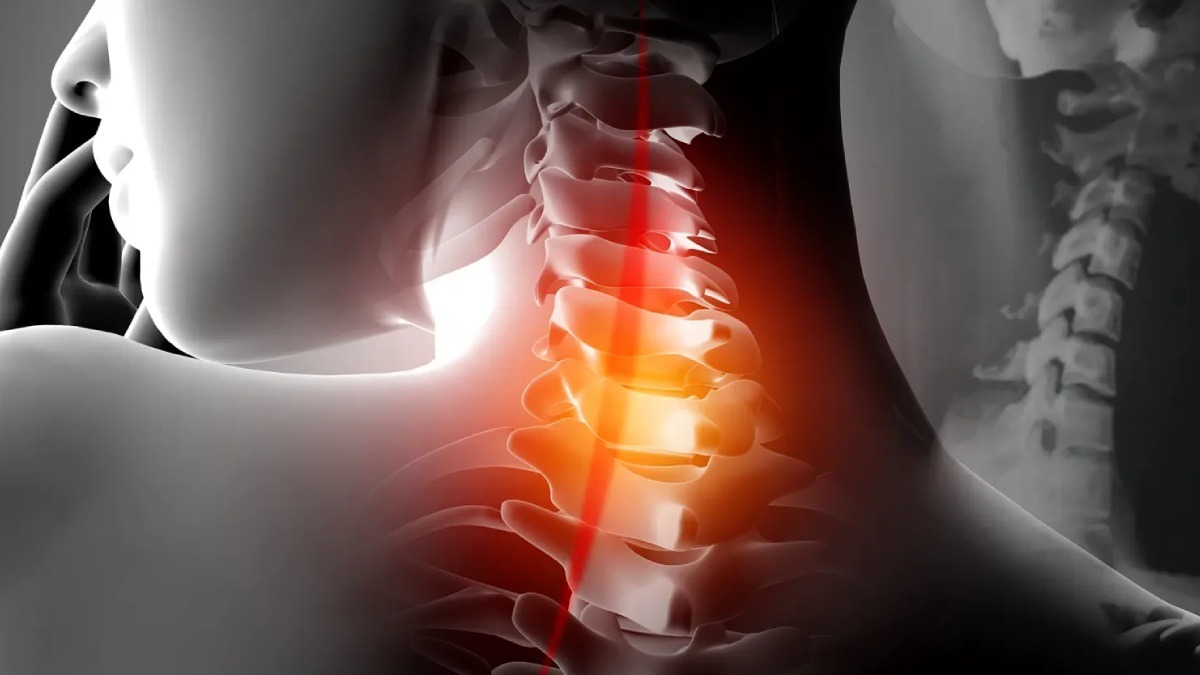Cervical instability, characterized by excessive motion between two or more cervical vertebrae, can lead to chronic pain and neurological symptoms, significantly impacting daily life. Understanding the causes, pathogenesis, symptoms, and diagnosis is essential for effective treatment. This blog focuses on innovative treatments like Prolotherapy and Platelet-Rich Plasma (PRP) therapy for managing cervical instability.

Causes of Cervical Instability
- Trauma: Injuries from car accidents, falls, or sports can damage the ligaments and muscles supporting the cervical spine.
- Degenerative Changes: Conditions such as osteoarthritis and degenerative disc disease weaken the structural integrity of the cervical spine.
- Congenital Disorders: Some individuals are born with structural abnormalities or connective tissue disorders like Ehlers-Danlos syndrome, predisposing them to cervical instability.
- Inflammatory Conditions: Diseases like rheumatoid arthritis can cause inflammation and deterioration of the cervical spine’s supporting structures.
- Surgical Procedures: Previous neck surgeries may compromise the stability of the cervical spine.

Pathogenesis of Cervical Instability
Cervical instability arises from the weakening or damage of the ligaments, discs, and muscles that stabilize the cervical vertebrae. When these structures fail to function properly, abnormal movement and excessive motion occur between the vertebrae, leading to mechanical stress and potential neurological compromise. This instability can result in misalignment, nerve compression, and chronic inflammation, perpetuating a cycle of pain and dysfunction.

Symptoms of Cervical Instability
- Neck Pain: Persistent or intermittent pain in the neck region, often exacerbated by movement.
- Headaches: Frequent headaches, particularly at the base of the skull.
- Neurological Symptoms: Numbness, tingling, or weakness in the arms and hands.
- Dizziness and Vertigo: Sensations of dizziness or imbalance.
- Visual Disturbances: Blurred vision or difficulty focusing.
- Fatigue: Chronic fatigue due to constant muscle strain and pain.
- Muscle Spasms: Involuntary contractions of the neck muscles.

Diagnosis of Cervical Instability
Diagnosing cervical instability involves a thorough clinical evaluation, imaging studies, and sometimes specialized tests:
- Clinical Examination: A detailed medical history and physical examination to assess symptoms and functional limitations.
- Imaging Studies:
- X-rays: To visualize bone alignment and detect any obvious structural abnormalities.
- MRI (Magnetic Resonance Imaging): Provides detailed images of soft tissues, including ligaments, discs, and nerves.
- CT (Computed Tomography) Scan: Offers cross-sectional images of the cervical spine for a more comprehensive view.
- Dynamic Imaging: Flexion-extension X-rays to assess abnormal motion between vertebrae.
- Neurological Tests: To evaluate nerve function and identify any neurological deficits.

Treatment Options for Cervical Instability
- Conservative Management:
- Physical Therapy: Exercises to strengthen the neck muscles and improve stability.
- Pain Management: Medications, including NSAIDs and muscle relaxants, to alleviate pain and inflammation.
- Lifestyle Modifications: Ergonomic adjustments and activity modifications to reduce strain on the neck.
- Surgical Interventions: In severe cases where conservative measures fail, surgery may be necessary to stabilize the cervical spine. Procedures include spinal fusion or ligament reconstruction.
- Prolotherapy: An Emerging Treatment Option
- What is Prolotherapy? Prolotherapy, also known as proliferative therapy or regenerative injection therapy, involves injecting a solution (often containing dextrose) into the affected ligaments and tendons. This solution stimulates the body’s natural healing processes, promoting the growth of new collagen and strengthening the weakened structures.
- Mechanism of Action: The injected solution causes a mild inflammatory response, which triggers the body’s healing cascade. This leads to the deposition of new collagen fibers, enhancing the stability and strength of the ligaments and tendons.
- Benefits of Prolotherapy:
- Non-Surgical: Prolotherapy is a minimally invasive procedure that avoids the risks and recovery time associated with surgery.
- Pain Relief: By strengthening the supportive structures, Prolotherapy can significantly reduce pain and improve function.
- Improved Stability: Enhanced ligament and tendon strength can lead to better overall stability of the cervical spine.
- Procedure:
- The area to be treated is cleaned and numbed with a local anesthetic.
- The Prolotherapy solution is injected into the targeted ligaments and tendons.
- Multiple sessions may be required, typically spaced a few weeks apart, to achieve optimal results.
- Platelet-Rich Plasma (PRP) Therapy: Another Promising Treatment
- What is PRP Therapy? PRP therapy involves injecting a concentrated solution of the patient’s own platelets into the affected area. Platelets contain growth factors that promote healing and tissue regeneration.
- Mechanism of Action: The growth factors in PRP stimulate the repair of damaged tissues, reduce inflammation, and promote the formation of new collagen. This enhances the stability and function of the cervical spine.
- Benefits of PRP Therapy:
- Autologous Treatment: Since PRP is derived from the patient’s own blood, there is minimal risk of allergic reactions or infections.
- Accelerated Healing: PRP can speed up the healing process, providing faster relief from symptoms.
- Minimally Invasive: PRP therapy is a minimally invasive procedure with little downtime.
- Procedure:
- A sample of the patient’s blood is drawn and processed to concentrate the platelets.
- The PRP solution is injected into the affected ligaments and tendons under ultrasound guidance.
- Multiple sessions may be needed to achieve the best results.

Conclusion
Cervical instability is a complex condition that can significantly impact a person’s quality of life. Understanding its causes, pathogenesis, and symptoms is crucial for accurate diagnosis and effective treatment. While traditional treatment options like physical therapy and surgery are available, innovative treatments such as Prolotherapy and PRP therapy offer promising alternatives. These regenerative therapies harness the body’s natural healing mechanisms to strengthen the cervical spine’s supportive structures and alleviate pain. If you are experiencing symptoms of cervical instability, consult with a healthcare provider to explore the best treatment options for your specific condition.
At ALGOS Multispeciality Pain Clinic, we are dedicated to providing comprehensive care and innovative treatments, including Prolotherapy and PRP therapy, to help you achieve optimal health and well-being.





